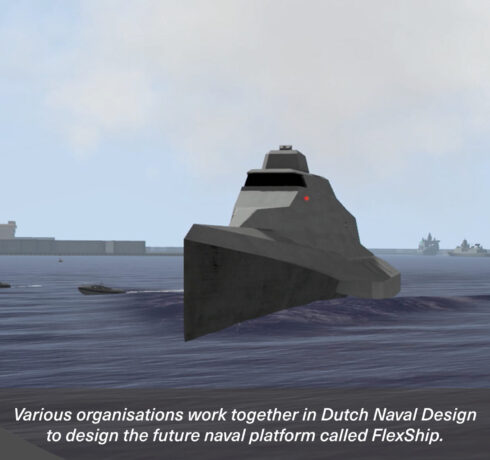The Dutch Naval Design project that is working on the future naval platform called FlexShip took a significant step forward in March. Approximately 90 invited participants came together for two separate brainstorming workshop days. The aim of the workshops was to take the development roadmaps that were defined last year to the next level by discussing the aims of the seven most important themes within the FlexShip concept.
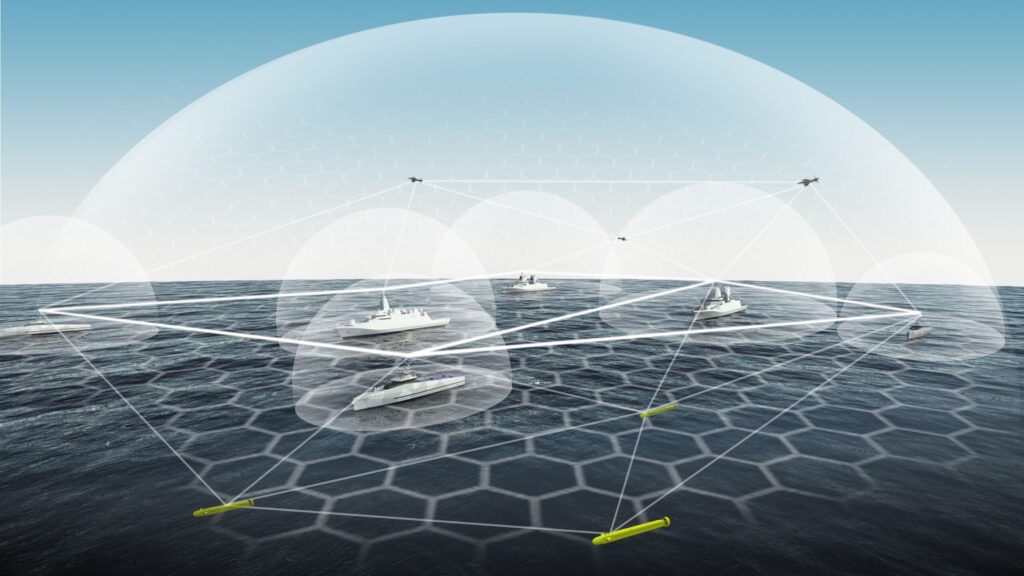 Dutch Naval Design is a joint R&D effort to deliver the next generation of Naval platforms: the FlexShip.
Dutch Naval Design is a joint R&D effort to deliver the next generation of Naval platforms: the FlexShip.
Damen Naval Project Manager research Joep Broekhuijsen says that the invitations to the events were as broad as possible. “We wanted to invite a really wide mix of different parties. So, in addition to the ‘usual suspects’ like RH Marine, DNV, MARIN, and TNO, we had companies and organisations that we have not yet worked with before, including start-ups and smaller companies. The fact that coronavirus restrictions had been reduced helped us attract a lot of people.”
After a round of introductions, the participants were divided into groups of about 25 people to discuss the seven themes of the Dutch Naval Design Project. Joep outlines these below.
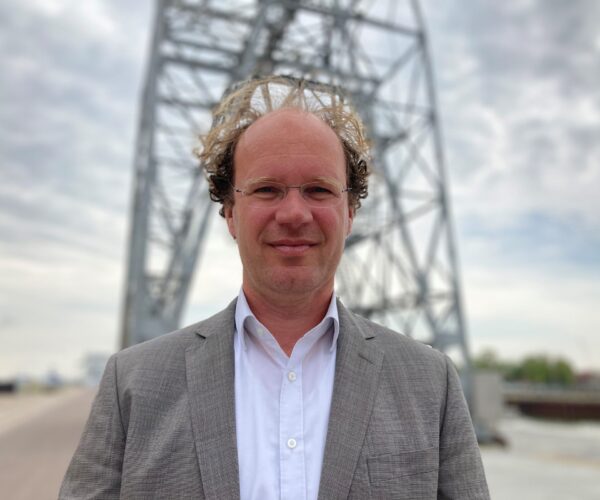 Damen Naval Project Manager Research Joep Broekhuijsen.
Damen Naval Project Manager Research Joep Broekhuijsen.
1. Mission model-based system engineering
The first theme is the most important, forming the foundation for the following six themes. Mission model-based system engineering moves away from document-driven engineering to lay down all the knowledge and information of a project in a model that is applicable for the whole lifecycle of the ship. “Model-based systems engineering is a well-known term,” says Joep. “We have added the word ‘mission’ because of the importance of looking at the actual operational capabilities that you need to deliver.”
2. Energy & mobility
The idea behind this theme is that the naval industry has to play its role in increasing the sustainability of its operations. “This is in line with the European Green Deal, and for strategic and operational reasons too; a navy needs to maintain independence on the subject of fuel. There is a whole scale of options available. A key aspect will be to give a vessel the possibility to adjust to different energy sources over its lifecycle – even switching fuels between peacetime and combat operations. This ensures that the vessel platform stays valid for 30 years.”
3. Digital twinning
A digital twin is more than a simulation; it is a virtual environment enriched with real world data gathered from the asset, which can be the whole ship or just one specific system. “This follows on from model-based systems engineering,” explains Joep. “If you have followed this process then you have almost built a digital twin. This creates a feedback loop which allows you to constantly improve your model. There is a very broad application for digital twins. For example, you can simulate the performance of a ship before you have even built it. Or you can simulate the building process or applications for decision support in the operational phase.”
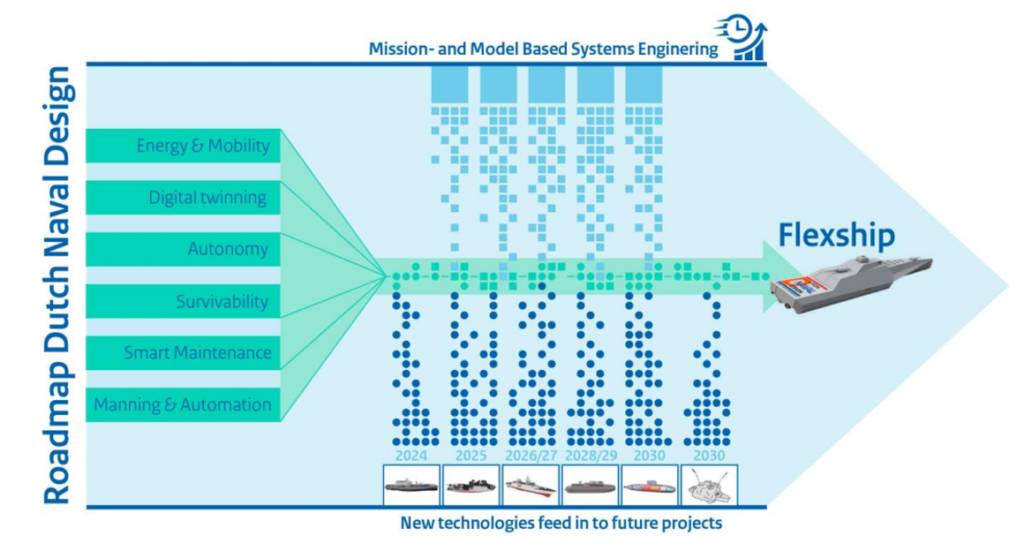 The project has identified seven themes which will be extensively researched in the coming years.
The project has identified seven themes which will be extensively researched in the coming years.
4. Autonomous operations
“This follows on from the previous theme; you need digital twins to carry out unmanned operations,” notes Joep. “The future will see more distributed capacity. For example, effectors on more than one platform. This can increase redundancy as well as survivability and will take people out of the dangerous situations. A very important point for Damen is how to integrate this technology into a total solution that would help our clients with their total mission requirements.” The F.A.S.T project taking place in Vlissingen is actually the beginning of this programme.
“It was great how the workshop participants really want to get started on actual projects." Joep Broekhuijsen
5. Manning & automation
“This is the step before full autonomy; the further automation of all sorts of onboard processes using smaller, more optimised crews. You can also see the relevance of this subject when you notice that it is getting more and more difficult to find qualified people. Therefore, efficiently is important. However, people will always be in the loop, in the role of flexible trouble-shooter to solve problems.”
6. Survivability
“Survivability is quite a large subject. Among other things, it includes redundancy, detectability, camouflage, signature modification, damage containment, and countermeasures like jamming and decoys. Once again, we’re not talking about one ship here, but more of a network of ships. A number of smaller vessels with one mothership. This is what we call dispersed functionality; different functions spread over different vessels.”
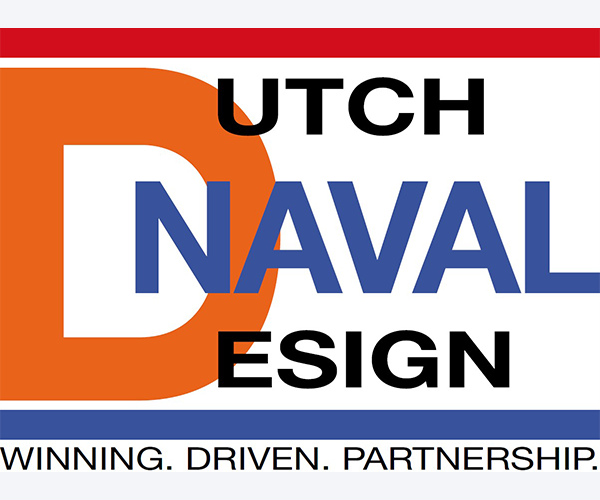
7. Smart maintenance
“This is about increasing the reliability and availability of the platform. It comprises various elements, which have to be taken into account in the early stages of design. What is the maintenance strategy? What choices are being made about the technical solutions being brought on board? For this subject, sensors and data management are also very important. This is active monitoring; predicting when a component will fail and planning your maintenance according to that.”
Even though the Dutch Naval Design project has identified 2050 as the ‘finish line’ of the project, Joep is keen to point out that there will be multiple interim points in the path to 2050. “The road maps that we are making have no end date; they are living documents. We cannot go from now to 2050. We have to make many steps in between. This was a crucial ambition of the workshops – to look at what steps need to be taken in order to reach our goals. As you can see, these seven themes are actually quite close to each other, there is a lot of cross pollination. It was great how the workshop participants really want to get started on actual projects. This is what this project is all about: accelerating the process of platform technology development and making sure that new technologies are applied in new platforms. And from our point of view here at Damen, we want to make sure of Damen’s position as system integrator.”
The Dutch Naval Design project is coordinated by the Dutch Ministries of Defence and Economic Affairs, with collaboration from research institutes MARIN, TNO, TU Delft and the Netherlands Aerospace Centre, and the Netherlands Industries for Defence and Security (NIDV). The NIDV comprises the Dutch naval shipbuilding and suppliers’ sector and Damen Naval is their representative on the Dutch Naval Design Project.

